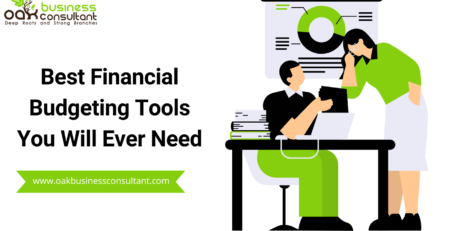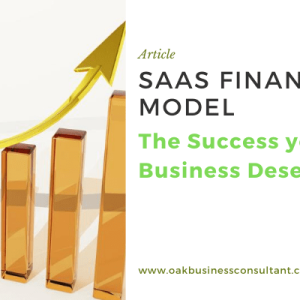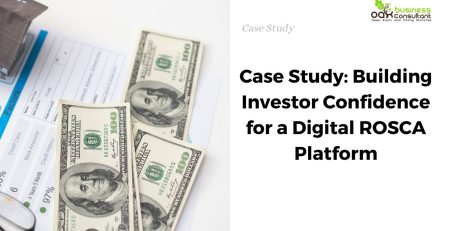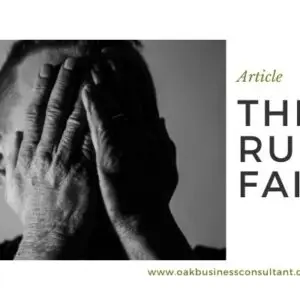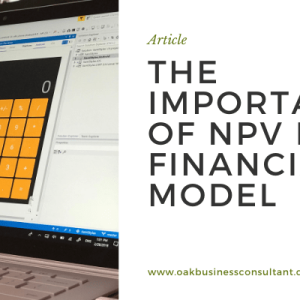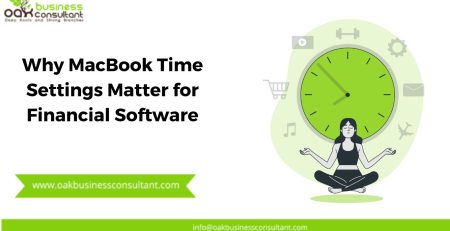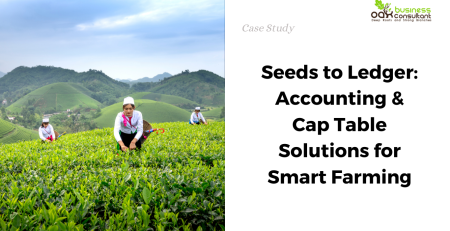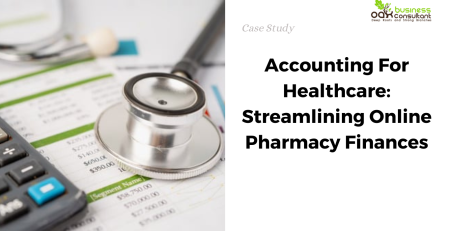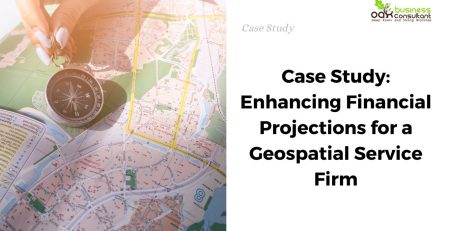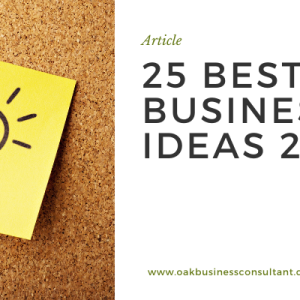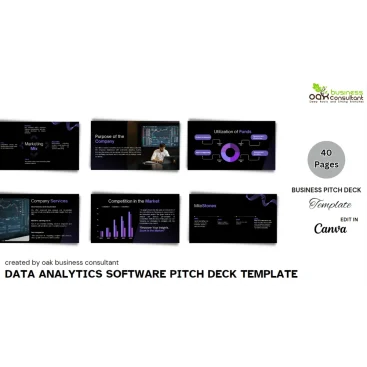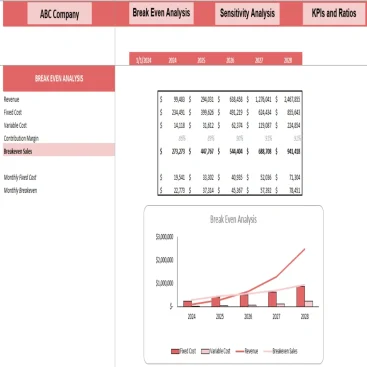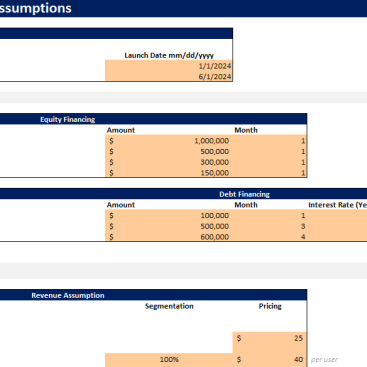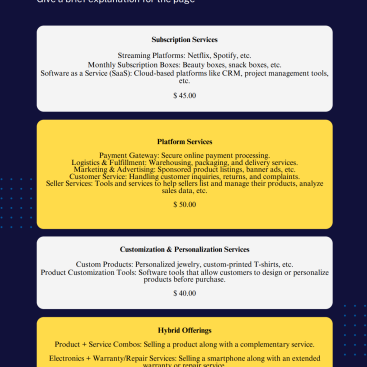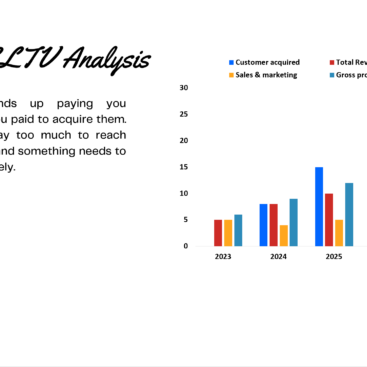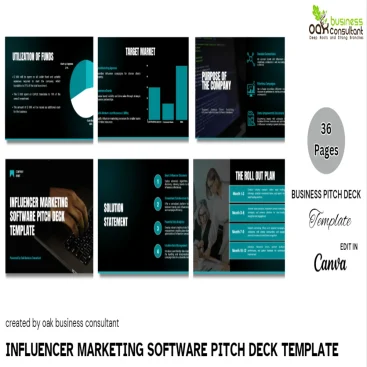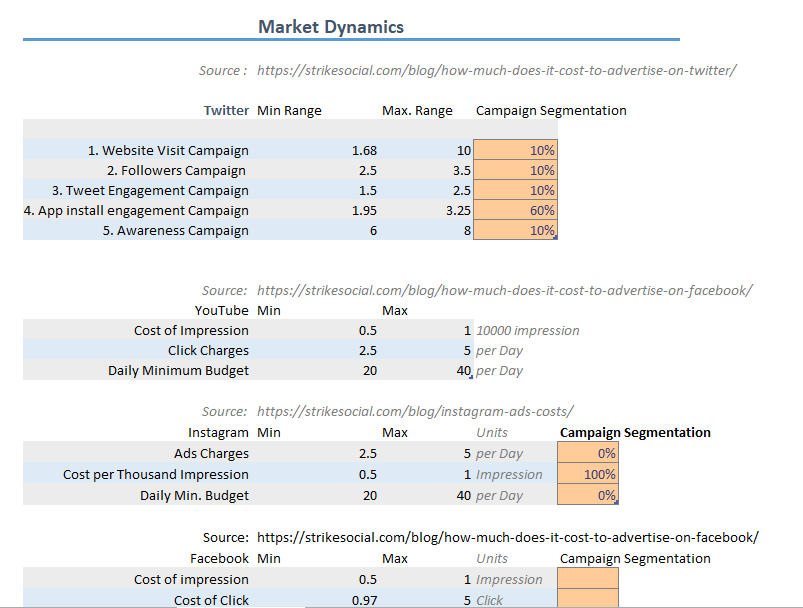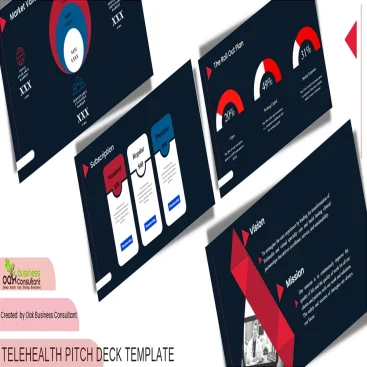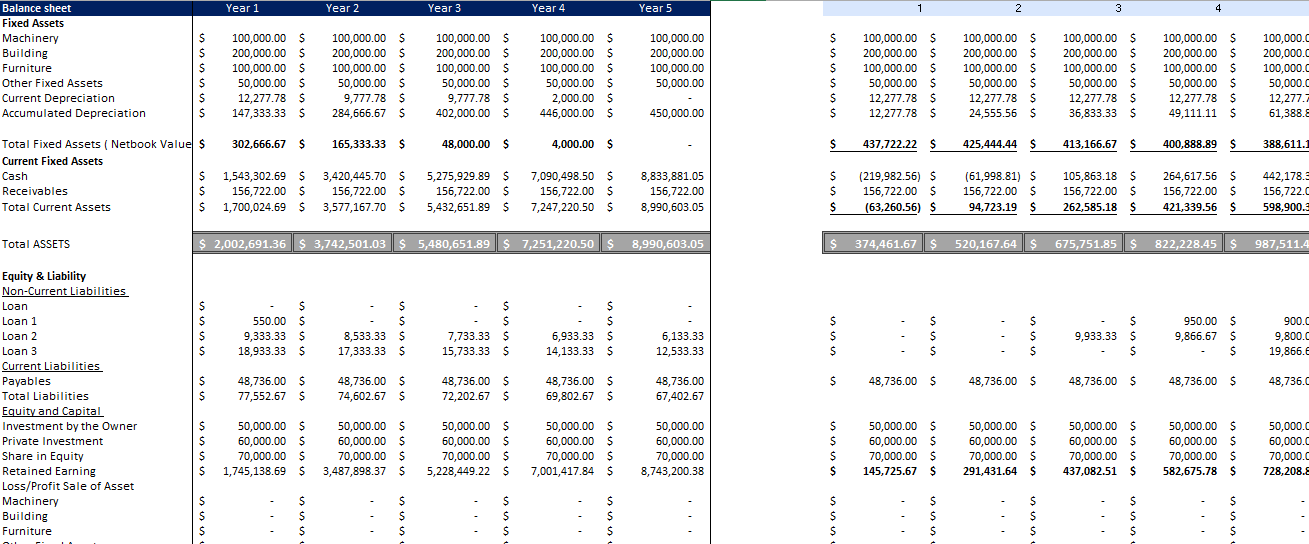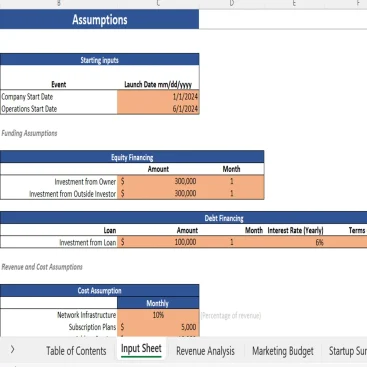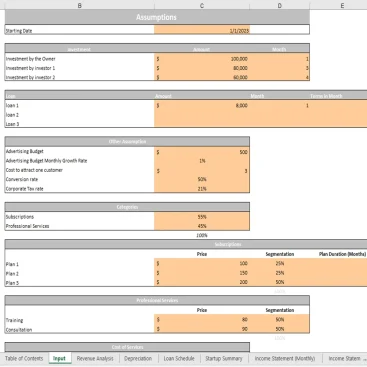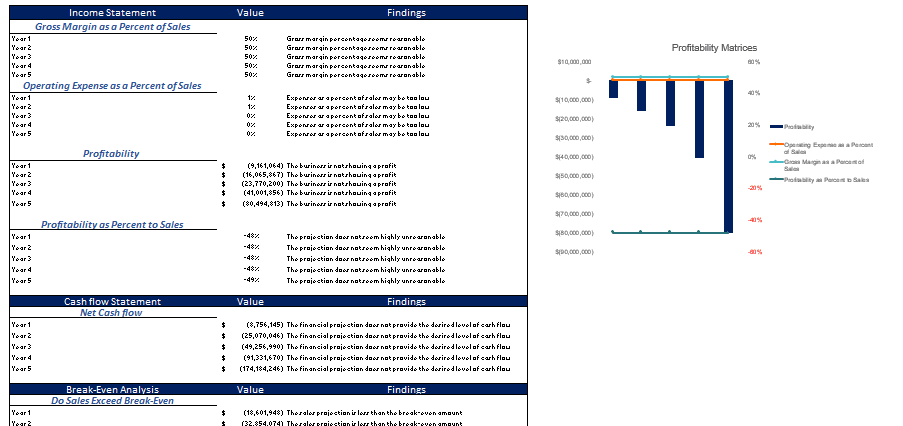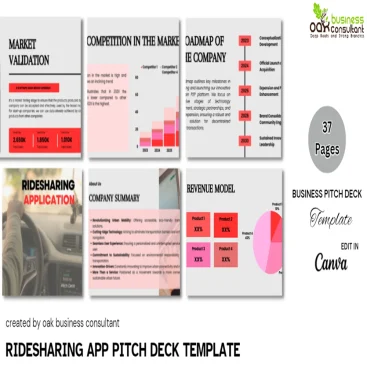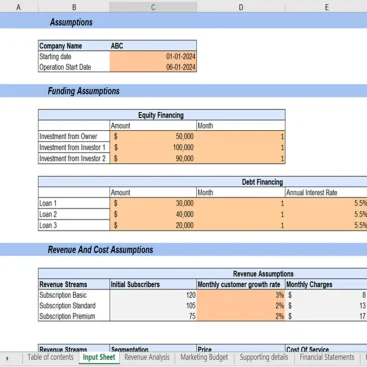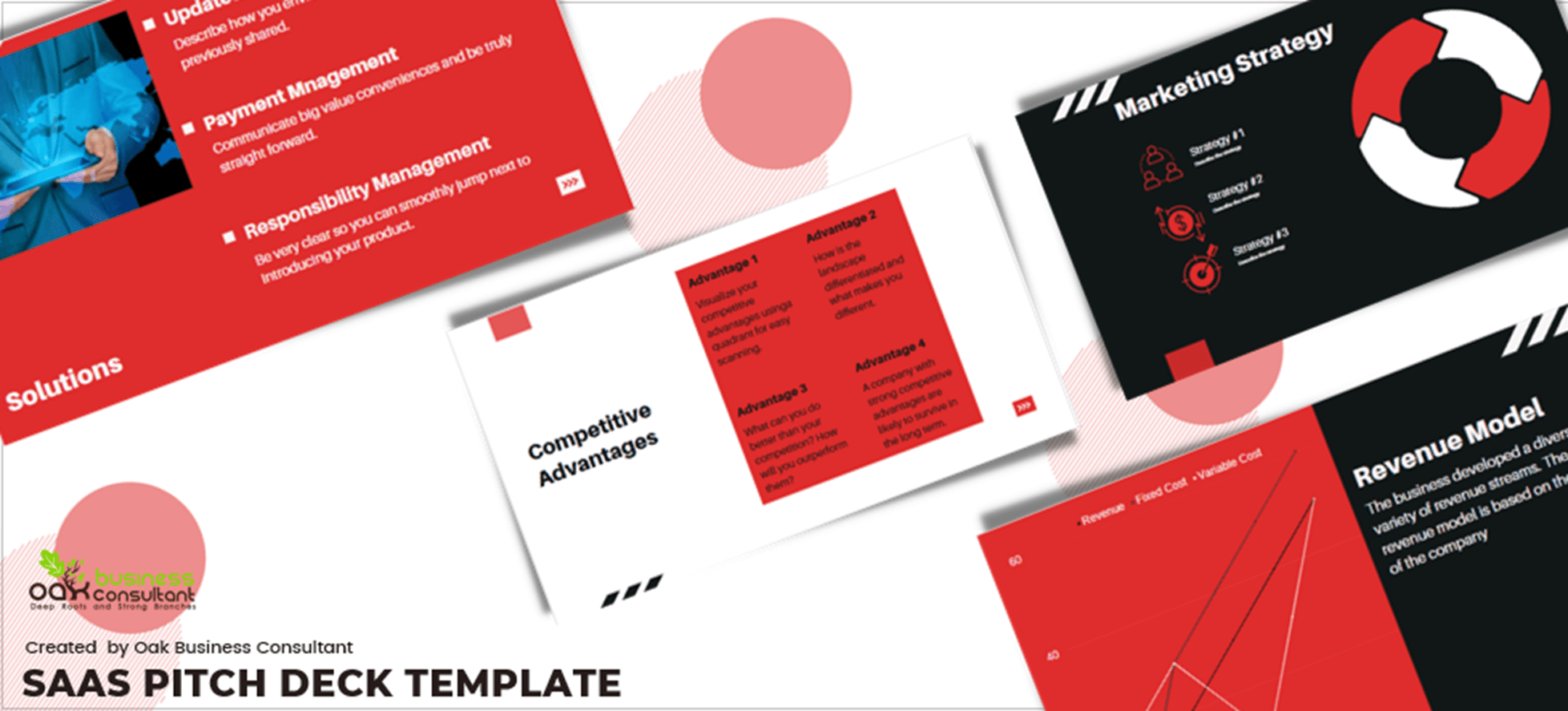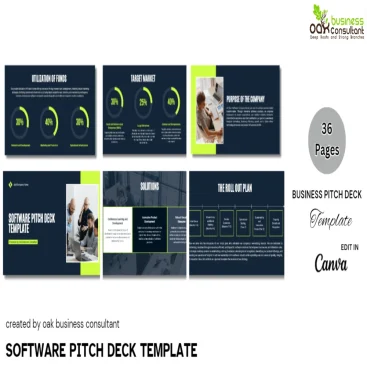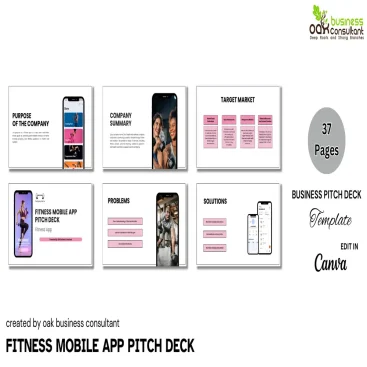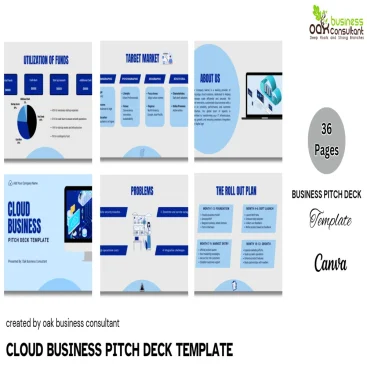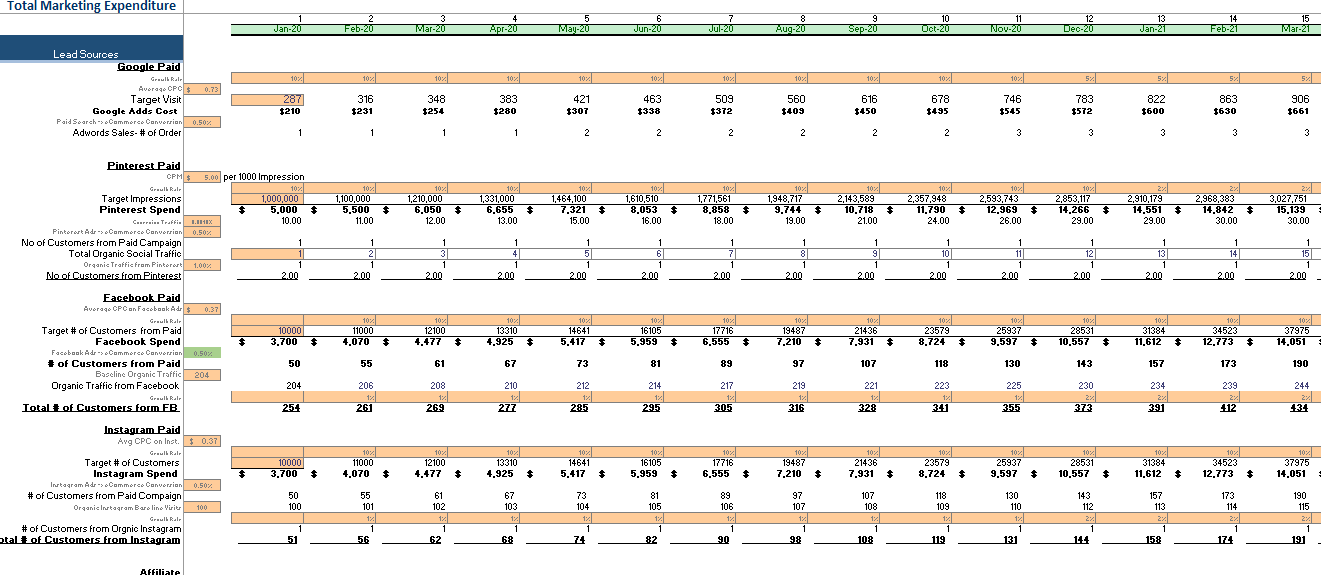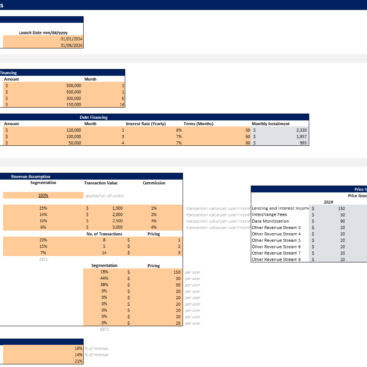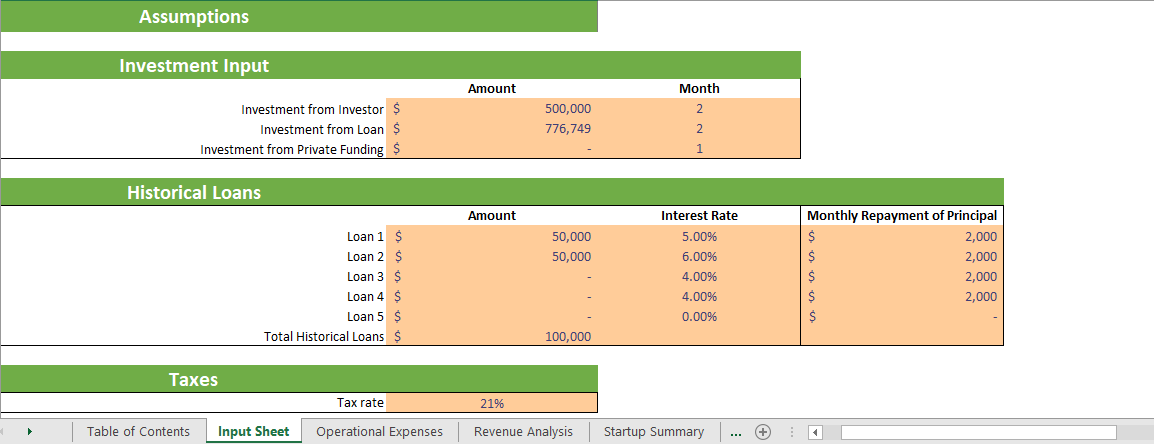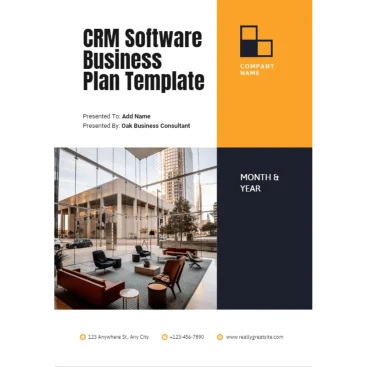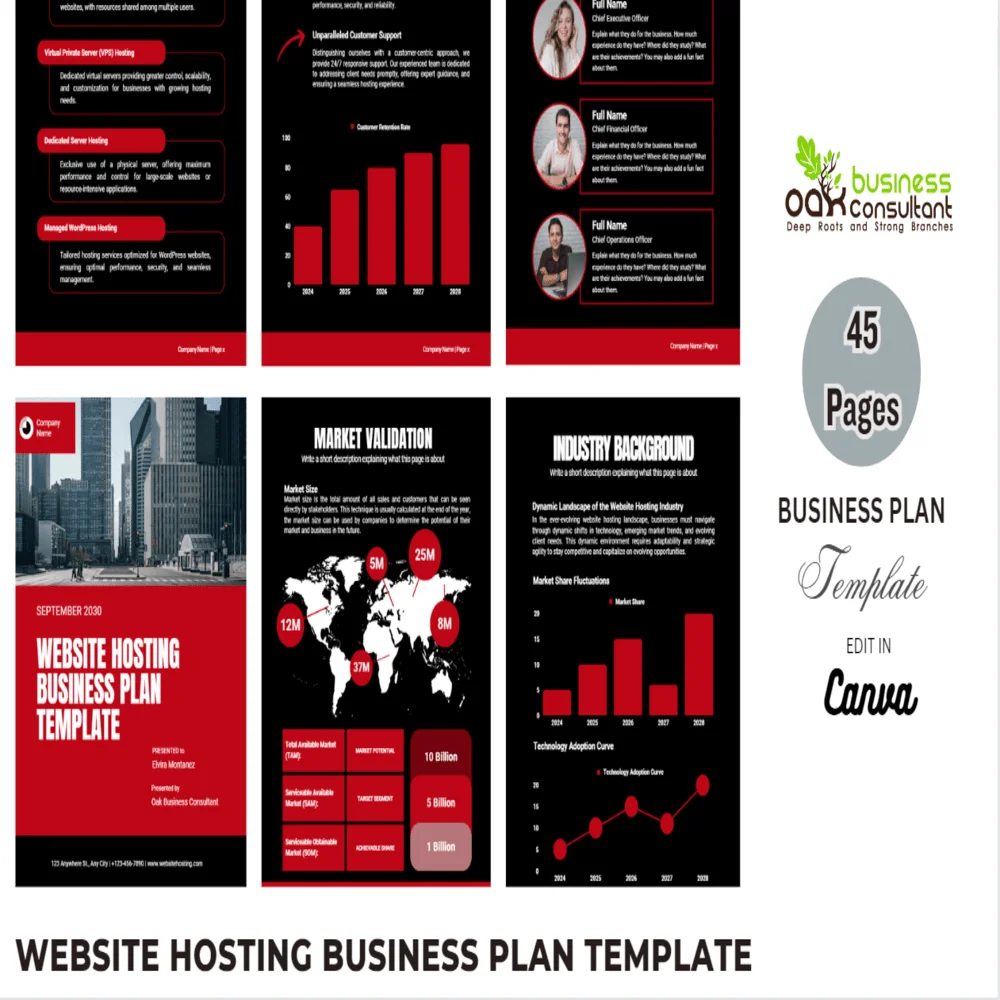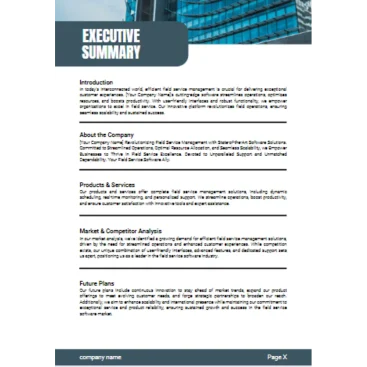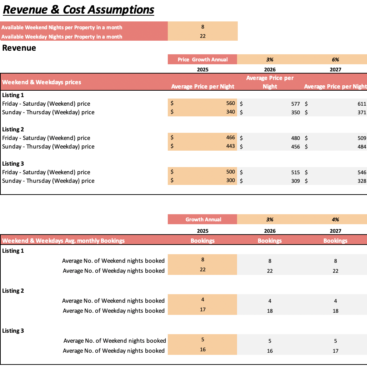Case Study: Building a SaaS Financial Model to Attract Investors
Client Overview:
Our client, a high-growth SaaS company specializing in an innovative Restaurant Management Application, faced challenges in developing an accurate and scalable financial model. Their application is designed to streamline restaurant operations, offering state-of-the-art IT solutions for the industry. The client required our expertise to conduct comprehensive market research and build a detailed SaaS financial model to secure investment and ensure long-term success. The primary objectives were to enhance financial performance, optimize customer acquisition costs, and improve revenue forecasting. As part of the project, we developed a robust 5-year financial plan and conducted in-depth market analysis to assess market dynamics from an investment perspective.
Challenges:
- Inaccurate financial model leading to misaligned revenue forecasts.
- Lack of a comprehensive three-statement model, including the balance sheet, income statement, and cash flow statement.
- Difficulty in projecting customer acquisition and churn rates, impacting customer lifetime value (CLV) and retention rate.
- Absence of a dynamic financial model template to track revenue growth and operating expenses.
- Inefficient pricing model and pricing tiers affecting revenue per user and cost of revenue.
- Need for better financial planning to secure potential investors and manage capital expenditures.
Solutions Implemented:
To address the client’s challenges, we developed a dynamic SaaS financial model to improve revenue projections, optimize costs, and enhance investor reporting. Simultaneously, we conducted in-depth market research to assess industry trends, customer segmentation, and competitive positioning. This comprehensive approach provided the client with strategic financial insights and market intelligence, strengthening their growth strategy and attracting investor interest.
SaaS Financial Model
We developed a scalable three-statement SaaS financial model to enhance revenue forecasting, optimize CAC, and improve retention. By refining pricing strategies, cash flow management, and investor reporting, we provided a dynamic financial roadmap that strengthened decision-making and positioned the company for sustained growth. Below is the detail of the SaaS financial model solution we offered for our client.
Development of a Comprehensive SaaS Financial Model:
- Created a robust three-statement model integrating balance sheet statements, cash flow timing, and financial projections.
- Incorporated direct costs, cost of sales, and discretionary expenses to ensure accurate financial viability assessments.
Customer Acquisition and Retention Analysis:
- Implemented key business metrics such as CAC payback period, revenue per user, and customer churn rate.
- Designed a marketing-driven low-touch sales model to reduce customer acquisition costs.
- Developed revenue streams and revenue targets based on segmented customer data.
Revenue Forecasting & Growth Projections:
- Created a revenue forecast model with base-case and worst-case scenarios.
- Conducted a financial forecast model integrating pricing increases, growth targets, and cash burn rates.
- Evaluated monthly recurring revenue (MRR) trends to improve financial health and ensure future performance stability.
Operational Expense Management:
- Assessed payroll taxes, administrative expenses, and impact of expenses on cash balance.
- Built hiring plans to optimize human resources and customer success team members.
- Incorporated annual plans and monthly plans for better cash flow management.
Investor & Stakeholder Reporting:
- Developed key performance indicators (KPIs) to showcase financial performance.
- Provided a powerful tool for tracking financial statements and forecasting model assumptions.
- Created a dynamic tool for investors to evaluate profit margin, financial template accuracy, and growth hypotheses.
Market Research & Strategic Insights
To ensure sustainable growth and attract potential investors, we conducted comprehensive market research for our client. This analysis focused on industry trends, customer behavior, and competitive dynamics. The research provided critical insights into market opportunities, potential risks, and strategic positioning. These findings enabled the client to make informed decisions and optimize their business model effectively. Below are features of market research we conducted for our client.
Market Size and Growth Analysis
Assessed industry growth potential, market demand, and revenue opportunities to determine the total addressable market (TAM) and growth projections.
Customer Segmentation
Identified key customer personas based on demographics, behavior, and purchasing patterns to optimize targeting and acquisition strategies.
Competitive Landscape Analysis
Evaluated competitors’ strengths, weaknesses, pricing models, and market positioning to refine the client’s differentiation strategy.
Industry Trends & Forecasting
Analyzed emerging trends, technological advancements, and shifting customer expectations to guide long-term strategic planning.
SWOT Analysis
Conducted an in-depth evaluation of internal strengths and weaknesses while identifying external opportunities and potential threats to business growth.
Market Entry Strategies
Developed actionable market penetration strategies, including pricing models, customer acquisition plans, and expansion roadmaps.
Risk Assessment & Mitigation
Identified potential risks such as market volatility, regulatory challenges, and customer churn, providing structured mitigation strategies to ensure business stability.
Results & Impact:
- Improved accuracy of financial models by 75%, ensuring better strategic decision-making.
- Enhanced financial viability by optimizing revenue models and reducing churn rates.
- Achieved an optimized CAC payback period, leading to increased customer lifetime value.
- Strengthened cash flow positive positioning through effective pricing plans and forecasting model adjustments.
- Increased retention rate and customer base by refining business models and marketing strategy.
By implementing a structured approach to financial modeling, our client successfully streamlined financial planning, enhanced revenue forecasting accuracy, and improved financial performance, ensuring long-term growth and sustainability.
Client Testimonials
They adapted to our needs and schedules with commendable professionalism.
Reza Baradaran Gazorisangi- CEO
Clutch Review
What’s in It for You?
As a SaaS business owner, investor, or financial decision-maker, you understand the complexities of scaling operations, optimizing revenue, and maintaining financial stability in a competitive market. Without a well-structured financial model, your business may face:
- Inaccurate revenue forecasts, leading to poor financial planning and missed opportunities.
- High customer acquisition costs (CAC), impacting profitability and growth.
- Unoptimized pricing strategies, reducing revenue per user and overall margins.
- Cash flow challenges, making it difficult to sustain operations or scale effectively.
- Investor uncertainty, as financial projections are critical for securing funding.
How Can You Overcome These Challenges?
Here are proven strategies to transform financial obstacles into growth opportunities:
- Develop a Scalable SaaS Financial Model – Build an integrated three-statement model to track revenue, expenses, and cash flow effectively.
- Optimize Pricing & Revenue Streams – Implement tiered pricing and subscription models that maximize profitability.
- Improve Customer Acquisition & Retention – Analyze CAC, CLV, and churn rate to refine marketing and sales strategies.
- Enhance Cash Flow Management – Forecast operational costs, investment needs, and revenue growth for financial stability.
- Boost Investor Confidence – Present clear, data-driven financial projections that demonstrate business scalability.
Ready to Strengthen Your SaaS Financial Strategy?
At Oak Business Consultant, we specialize in financial modeling, revenue forecasting, and strategic business planning for SaaS companies. Book a free consultation today, and let’s build a customized financial roadmap to drive your SaaS business toward long-term success!
Frequently Asked Questions
How long does a financial transformation process typically take?
The duration varies based on the complexity of the business. In this case, we achieved measurable results within 12 months, but some companies may see improvements within 6–18 months.
Can small businesses also implement similar financial improvements?
Absolutely. Small and medium-sized enterprises (SMEs) can benefit from streamlined financial processes, cash flow management, and compliance strategies tailored to their scale.
How does ERP implementation improve financial performance?
ERP systems centralize financial data, improve accuracy, automate routine processes, and provide real-time insights, leading to better financial decision-making and cost savings.
How do you ensure regulatory compliance in different industries?
We customize compliance strategies based on industry-specific regulations, conduct internal audits, and implement tax optimization strategies to minimize risks.
Conclusion:
Our expertise in SaaS financial modeling, revenue forecasting, and financial planning provided the client with a strategic advantage. The newly implemented model serves as a dynamic tool to guide business strategy, ensuring sustained revenue growth and financial health. With continued monitoring and adjustments, the company is now well-positioned to attract potential investors and achieve long-term financial success.Ready to optimize your SaaS financial strategy? At Oak Business Consultant, we specialize in building custom financial models that drive growth and investor confidence. Book a free consultation today and take the next step toward financial success!





